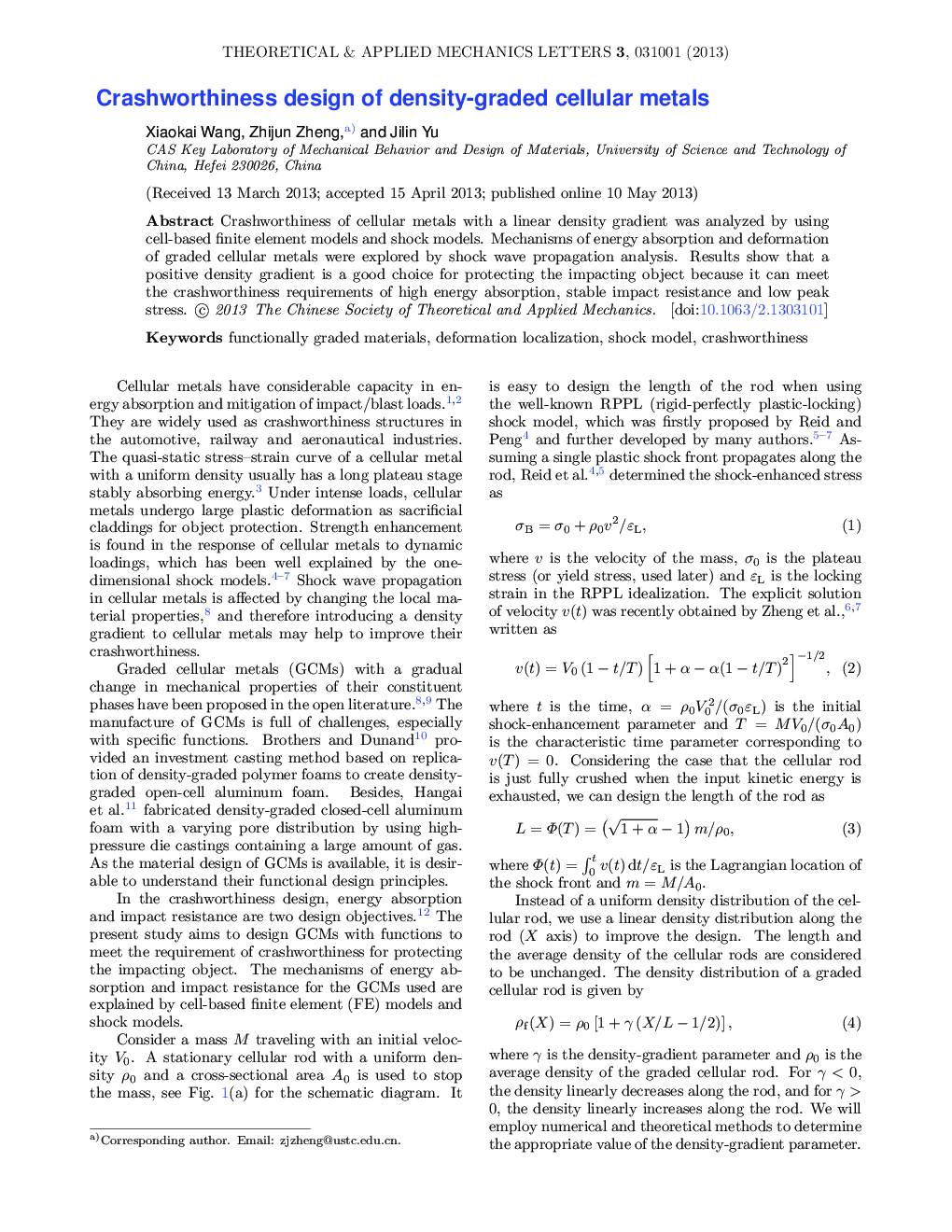| Article ID | Journal | Published Year | Pages | File Type |
|---|---|---|---|---|
| 808367 | Theoretical and Applied Mechanics Letters | 2013 | 28989 Pages |
Abstract
Crashworthiness of cellular metals with a linear density gradient was analyzed by using cell-based finite element models and shock models. Mechanisms of energy absorption and deformation of graded cellular metals were explored by shock wave propagation analysis. Results show that a positive density gradient is a good choice for protecting the impacting object because it can meet the crashworthiness requirements of high energy absorption, stable impact resistance and low peak stress.
Related Topics
Physical Sciences and Engineering
Engineering
Mechanical Engineering
